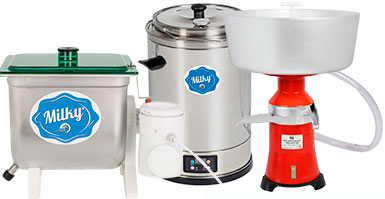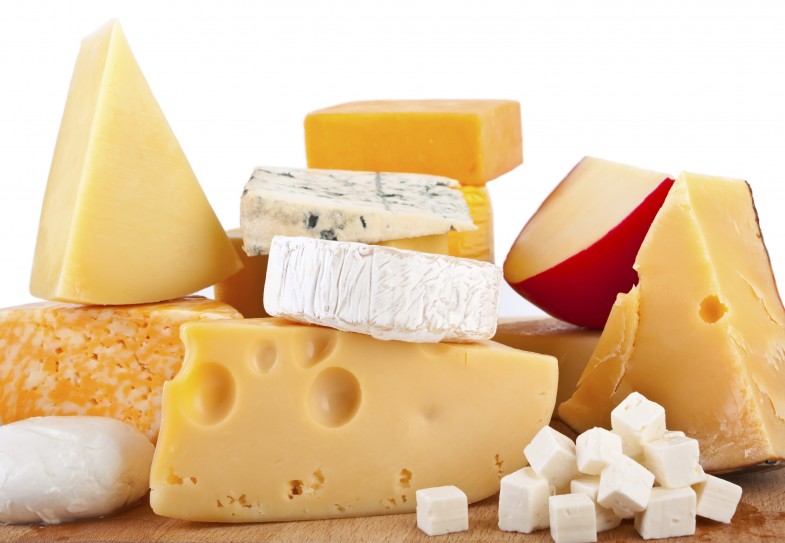Cheese is not so simple as you might think. A homemade cheese is especially not the simplest one. Just imagine that if you give completely identical ingredients to the two different cheesemakers and even if they will use the same proportions for cheese making, – they will NEVER make the same cheese at the end. It’s amazing, isn’t it?
With regard to the classification of the cheeses, it is not so simple too, because there are several types of the classification. We can classify the cheese by the type of the milk, by the clotting method, by the moisture content and by the fat content, – and we will make it for sure, but not today. Today, we will consider the other, no less important classification. Today we’ll learn what types of the cheeses exist in general, and by the way there are many of them! OK, guys, let’s get started! I distinguish the following types of the cheeses:
- Soft cheeses. This type includes the soft cheeses that need ripening, for example, such kind of the cheese as Abondance. Also, this type includes the soft cheeses that do not need to ripen, these are the so-called fresh cheeses, such as Chèvre. I have to confess that personally I like this type of the cheese most of all. What can be better than to spread the Philadelphia cheese on the crisp bun, to put over a thin slice of ham and to eat such yummy breakfast along with fresh, fluffy Omelette? Mmmmmm, sounds yummy, isn’t it? Ok, I think I’ve got a little carried away, so, let’s move on to the next type of the cheese.
- Semi-hard cheese. As you probably might guess, the name of these cheeses was obtained due to the less water content in them, if compared to the soft cheeses. Excess moisture can be extracted through longer maturation. The most prominent representatives of this type of the cheeses are Cheddar, Gouda and Edam cheeses.
- Hard cheeses. I am sure that you were thinking that we could not do without this type of cheese. Yeah, you were right! As you can guess, in order to make the cheese harder, it has to ripen longer. Also, usually, if the milk is less fat, then the cheese is more hard and crunchy. The most popular representative of this type of the cheese is Parmesan.
- Cheeses of the Swiss type. Yes, I distinguished this type of the cheeses as a separate type. Maybe you will ask me why. Ok, it’s quite clear, because these cheeses have their typical “holes” in their structure. After all, these “holes” form special bacteria, which, in their turn, give to these semi-hard cheeses unusual, distinctive taste and flavor, making it so special. The most prominent representatives of this type of the cheeses are Swiss cheese and Emmental cheese.
- Whey cheeses. It’s a special type of the cheese that is made, as you could guess, from the whey. The thing is that after the starter is added to the milk, it’s being separated into the cheese curd and the serum, in which a certain portion of the protein is still left. That’s exactly this protein that is acting as a “building material” for such type of the cheeses as Adyghe or Ricotta.
- Cheeses with mold. We cannot do without them for sure! I do not know what about you, guys, but as for me, this type of the cheeses is definitely standing out. It must be an unbelievable coincidence I think, that the milk and the mold, which dwells in a dark and damp place have met together and produced so delicious cheese. You do not see here anything special, don’t you? Well, to my opinion, a small miracle must have happened that after the cheese was covered with a mold, some reckless man was found, who was quite courageous to try such cheese with a mold. I believe that it was a pure magic 🙂 As you probably already know, the mold can be blue (Roquefort), white (Camembert) and red (Munster).
- Brine cheeses. I just could not help it but distinguished this soft cheeses as a separate type of the cheeses. It’s all due to the brine itself, in which these soft cheeses are ripening. I’m sure that everyone already tried brine cheese at least once in life. Do you still have any doubt? You shouldn’t have to! Have you ever tried Sulguni or Provolone cheeses? No?! Ok, then what about Mozzarella cheese? You see, I told you! Here I would also like to highlight two subtypes of the cheeses: the so-called “pulled” cheeses, such as Mozzarella, and “not pulled” cheeses such as Feta.
- Processed cheeses. Many experts do not consider this type of the cheese as the genuine cheese at all. After all, any dairy technologist will tell you something like: “If you did not get the desired cheese during the production, any time you can turn it into the processed cheese anyway.” That’s quite true, because at the end you’ll get very delicious and inexpensive cheese. These two factors make the processed cheese to be so popular.
You know what, guys? Perhaps, it’s enough for today. If you have something to share, you are most welcome! Please, go ahead and write! I hope you enjoyed my notes. You know what I’m going to do right now? OK, I’ll go to the kitchen and find there a fresh bun, will cut it in half, spread Philadelphia over it and eat it in a heartbeat, and it doesn’t even matter that now is not morning at all.
Stay in touch with Milky Day!
- Follow us on Twitter: https://twitter.com/MilkyDay_com
- Like our Facebook fan page: https://www.facebook.com/milkyday.official
- Get our updates on Google Plus: https://plus.google.com/u/1/110366636059048940500
- Join us on Instagram: https://instagram.com/milkyday_food/




Pingback: Cheese classification | | Nutrition, diet and h...()